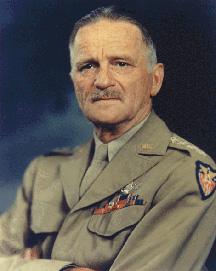On July 4th, 1942 the first American bomber mission flown from England by the U.S Army Air Forces (AAF) flew towards the occupied Netherlands. Flying Royal Air Force (RAF) “Boston” light bombers, six American crews of the 15th Bombardment Squadron, and six RAF crews of 226th Squadron attacked German Luftwaffe (air force) airfields. With the loss of two American crews, this first mission from England by the AAF foreshadowed the challenges faced during the war. Heroism and close cooperation of allies, determined opposition, and significant losses would typify the AAF bombing campaign in Europe. While the pioneers of American military aviation had not anticipated all the challenges of the campaign, determination, technical acumen, flexible leadership, and thorough planning drove success.
Before war broke out in Europe, American military aviation had embraced the idea of long-range, daylight, pattern bombing by tight, high-altitude formations. The pre-war U.S. Army Air Corps assumed a smaller force of long-range bombers could cover wide areas, and redeploy swiftly for more distant strikes. They thought these bombers should have strong defensive armament to fight through enemy fighter aircraft, and they would fly high, making them harder targets for enemy interception and antiaircraft fire.
This strategic vision matched the technical ability of the American aviation industry. Superior aerodynamic and structural design gave the B-17 and B-24 respective extreme ranges of 800 and 1200 miles. General Electric had introduced turbo-superchargers to maintain performance of the B-24 and B-17 during high altitude missions. Advanced electro mechanical Norden M series bombsights could accurately deliver bomb loads at extreme altitude. American military aviation and its policy on strategic airpower was well developed and became the basis for evaluating the air war in Europe from 1939 to 1941.
Col. Carl “Tooey” Spaatz, a military aviation pioneer who had commanded the 13th Aero Squadron, and shot down three enemy aircraft in World War I, became assistant military attaché (air) to Britain in May 1940. Understanding that war might come soon for the United States, Spaatz and his two assistants observed the Battle of Britain in the summer of 1940. Based on British experience, they advocated adding multi-gun power operated turrets to bombers, and expanding air service training programs. They observed British night bombing operations and the German “Blitz” against the RAF and British cities. Spaatz found 1940 British night bomber forces small and ineffective, but thought it was the beginning of “real airpower.” He considered Luftwaffe bombing forces large but so oriented to supporting ground forces that they could not perform strategic missions. The lesson they missed in the Battle of Britain was that day bombers needed fighters that could escort them deep into enemy territory.
Back in the United States, American air forces expanded with annual goals for pilot training—jumping from 300 in 1939 to 30,000 by late 1940. With the organization of the AAF finalized in June 1941, Spaatz became Chief of the Air Staff. Six months later, after Pearl Harbor and the U.S. declaration of war, plans were started to send heavy and medium bombers, with reconnaissance and fighter aircraft to England. Eighth Airforce headquarters was established in England on April 15, 1942 and Spaatz took over in June. The first contingent arrived in May. There would be over 1,000 aircraft by January 1943. This dedicated offensive force supported strategic objectives, and an eventual invasion of Europe. Spaatz defined to Gen. George C. Marshall and Secretary of War Henry Stimson the strategy of tactical air forces augmenting and protecting ground forces while strategic air forces bombed industry and infrastructure.
There were delays in moving such a large force across the Atlantic, organizing, and training it. Plans for the invasion of North Africa, known as Operation Torch, distracted from the effort. And simultaneously, the Pacific Theater competed for aircraft. Nearly seven months after the United States declared war, the symbolic July 4th raid served as a milestone for the AAF in Europe.
On August 17, 1942, the first American heavy bomber mission was launched from England. Twelve B-17s of the 8th Air Force’s 97th Heavy Bombardment Group raided the Sotteville-lès-Rouen railroad yards, while six more made a diversionary strike. Three more daytime raids went out on August 19, 20, and 21. These attacks and the July 4th raid were just the beginning.
By March 1945 the AAF would make raids with more than 500 heavy bombers, accompanied by American fighters deep into Germany. While the 8th Air Force supported Allied ground forces, it pushed to prioritize strategic targets as well. By war’s end, the AAF had built the 8th Air Force in England into a major contributor to final victory.


.jpg)